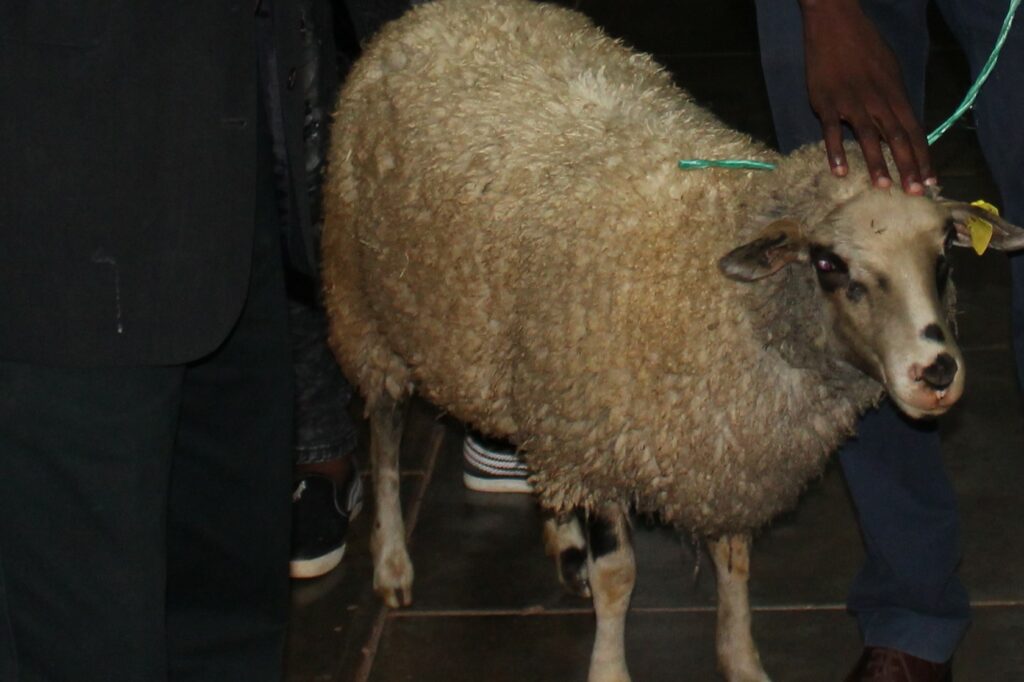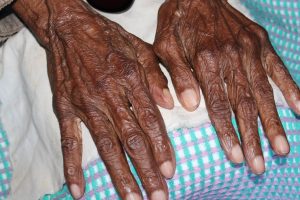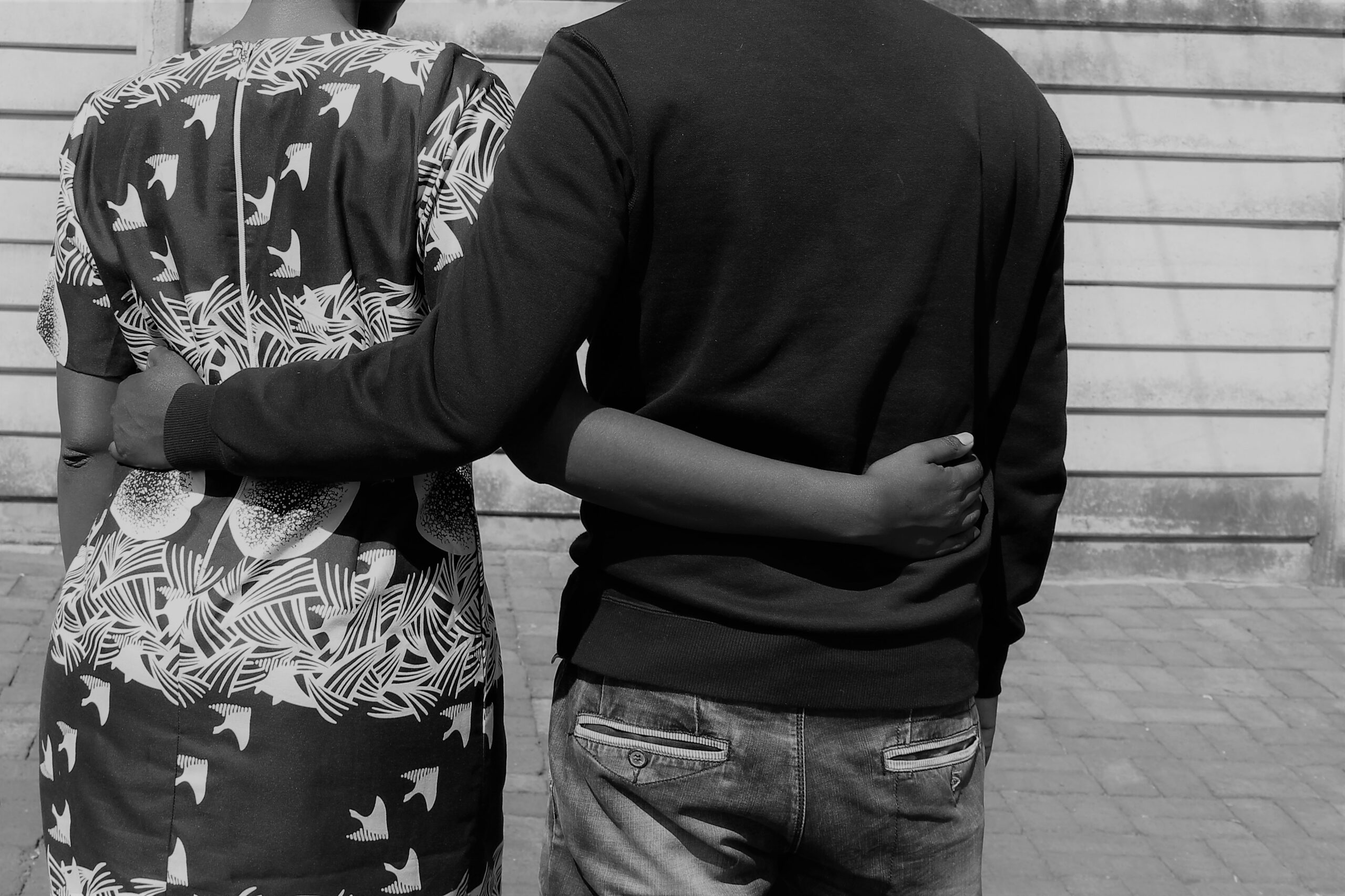This post was last updated on 11 April 2024.
Mutupo, chidao and detembo redzinza
- Mutupo (plural is mitupo) refers to a clan name which is symbolised by an animal, the totem.
- Chidao/ Chidawo (plural is zvidao/ zvidawo) refers to a praise name of a clan.
- Detembo redzinza (plural is nhetembo dzemadzinza) is the praise poem of a clan.
The mutupo system is an important source of ancestral and family history in Zimbabwe. The Shona are a cultural group native to Zimbabwe that became divided into a number of clans. The clans are represented by the various mitupo. Today totems, praise names and clan poems are still a huge identifier among the Shona people. The practice remains widespread and those that still recognise it take pride in ‘wearing’ their praise names.
Below are 6 interesting things you should know about the Shona totem system.
1. Kudya mutupo – eating the meat or products from your mutupo animal, is forbidden
A symbol of identity, totems serve as a safeguard against incest. Eating of the totem, kudya mutupo is forbidden. It is believed that if one eats their totem meat all their teeth will fall off. Others have suggested kudya mutupo refers to incest. Generally, people who have the same totem cannot get married. Since a totem represents members of the same clan, marriage between people of the same totem would be regarded as some form of incest.

2. A mutupo could be linked to a number of sub-clans, and each sub-clan is identified by a different chidao.
Most mitupo are linked to a number of zvidao, suggesting existence of sub-clans within a clan. Take a look at the ones listed below.
Mutupo List
| mutupo (clan name or totem animal) | chidao (praise name) |
| Shava | 1. Museyemwa 2. Mutenhesanwa 3. Mwendamberi 4. Vhuramayi 5. Mufakose 6. Mazarura 7. Nyakudirwa 8. Gonde 9. Gotami |
| Moyo | 1. Moyondizvo 2. Chirandu 3. Sinyoro 4. Nematombo 5. Wadyegora 6. Muzukuru 7. Mateere 8. Wakapiwa 9. Sithole 10. Bvumavaranda 11. Sayi 12. Zariro 13. Yavajena |
| Soko | 1. Vhudzijena 2. Murehwa 3. Chirongo 4. Wafawanaka 5. Mbire 6. Jena 7. Mukanya 8. Maidza |
| Shumba | 1. Mhazi 2. Gurundoro 3. Nyamuzihwa 4. Murambwi 5. Samaita 6. Nechinanga 7. Sipambi |
| Nzou | 1. Samanyanga 2. Matemai |
| Gwai* | 1. Mukuruwambwa 2. Kota 3. Chuma |
| Dziva | 1. Musaigwa 2. Muyambo 3. Dziriro |
| Gumbo | 1. Madyirapazhe 2. Mukuvapasi 3. Mhizha |
| Tembo | 1. Dhuve 2. Chiota 3. Mubaiwa 4. Mazvimbakupa 5. Samaita |
| Mbeva | 1. Zungunde 2. Mukundwa 3. Tovakare 4. Warerwa |
| Tsivo/ Mbwetete | Gushungo |
| Nyati | Chirombowe |
| Mhara | Chikonan’ombe |
| Ngara | Wamambo |
| Humba | Makombe |
| Shiri | Marunga |
| Beta | Dhliwayo |
| Nkomo | Mupamombe |
| Mheta | Saunyama |
- * According to one of my readers, the totem of the Gwai from Manicaland is kamba (tortoise) and not sheep.
- The table does not include all the clans of the Shona, and also there could be sub-clans that are not listed.
- Names like Shava, Tembo, and Dziva are clan names. The totem animals for these three are ‘mhofu,’ ‘mbizi,’ and ‘hungwe, mvuu, or hove(three different totem animals for Dziva)’ in that order.
While the most common Shona totems are from four-legged animals, there are others outside these categories. For instance the totem of the Beta clan is a flying termite known in ChiShona as ishwa.
3. Identifying someone by their mutupo or chidao, or reciting their detembo creates a sense of identity and worth in them
Nhetembo dzemadzinza, which are recited in line with mitupo and zvidao are in essence an expression of compliment recited as a reward for commendable acts. As praise naturally tends to build self-esteem, it seems this in a way was intended to create a sense of identity and worth in an individual. Reciting praise poems conveys a cultural message to cultivate a particular value from childhood.
When referred to by their mutupo or chidao, most Shona people will have a feeling of deep pleasure aroused in them.
It is also worth noting that most praise poems speak to the history of the clan. They also describe or make reference to the totemic animal or object, highlighting its commendable features or characteristics.
I paid a visit to ambuya Tirivangani, accompanied by a colleague of the Moyo totem under the Chirandu praise name. As soon as my colleague identified himself by his totem, realizing they share the same totem and clan praise name, she was very much delighted and said her formal greeting while referring to him as her father and remarking, ‘we are the same people.’
During our conversation, ambuya Tirivangani recalled how she would always recite the clan poem for her little girl of the Gwai totem after the little girl performed her errands or chores around the house. She remembers only a segment of the gwai woman clan poem which she proceeded to recite in unison with the now grown-up little girl who was also present.
'maita basa gwai maita basa machuma maita achinyerere'

4. Usage of the mutupo, chidao and detembo varies between men and women
The usage of totems, praise names and clan poems varies between men and women. A child will adopt the totem of the father. A woman will be addressed by way of the totem of the family which she is born into, but not the praise name. On the other hand, a man will be addressed by way of the totem or the praise name. Once a woman gets married, she can be addressed by the praise name of her husband in addition to her own totem. In addition, clan poems will have variations so as to differentiate between praising a woman as opposed to a man.
So for example, If I am of the Moyo totem, which has clan praise name Chirandu; while both my brother and I can be addressed as Moyo, as a woman I cannot be addressed as Chirandu. Only boys and men can be addressed as Chirandu. However, the wife of my brother may be addressed as Chirandu.
A common use of praise poetry although waning, is to show gratitude to one’s spouse. Back in the day, a woman would recite her husband’s praise poem to calm him, soothe him or praise him as appropriate. The man too would in similar circumstances achieve the same through use of words denoting his wife’s totem. The intended result was restoration of marital bliss, joy and a display of mutual respect between couples.
My aunt, who married into the Mupamombe clan, remembers how she would ‘sing praises’ to her husband;
Maita Ngezi, Maita Mupamombe,
Verimuka, Zhenjeguru,
Vakatumbura mombe nechara chipanga chichisvina muto,
Maita varidzi vemasango,
Maita vavhimi.
5. There is special praise poetry recited by women for their husbands
I have heard very little about love poetry, or should I call it ‘bedroom praise poetry’. My grandmother while admitting she was aware of this type of clan poetry, simply shook her head when I asked her to recite the poem for me, as she considers it too explicit. Perhaps that’s why its use is little known, highlighting one major challenge around oral tradition. A woman would recite the love poem known as ‘madanha omugudza’ to appreciate her husband’s prowess in the bedroom. It is said a woman could be sent back to her people to be counselled, where she failed in this regard.

I’m left wondering whether it was failure to recite the poetry, or rather failure to perform to the expectation of the husband that resulted in a woman being sent back to her people. However, at a time when women were expected to focus solely on their responsibilities as wives and mothers, I suppose any woman would heed whatever advice to ensure she pleased her husband especially in bed.
I came across the love poem for the Shumba Murambwi man. Like my grandmother, I just could not pen the portions I considered somewhat explicit.
‘Hekani Chibwa
Maita Shumba yangu
Mune kutendwa kune mubvururu
Baba vangu, VaChigumbate
Vanogumbatira mberi ne shure’
(J Haasbroek, Uyavaya hwenduri dzeChinyakare, 1988, 310)
6. There is special poetry recited by men for their wives
Men are known to have recited love poems known as ‘zvirevereve zvomugudza,’ for their wives too. Here the man shows respect and appreciation for his wife during the same period as that stated above. A man could also be reported to his grandmother where he failed in this regard, and a reprimand would be in order.
Here, a glimpse into the love poem for the Sinyoro woman;
‘Maita Zariro,
Vane zvitsime zvitenderere,
Zvakatenderedzwa netsanga nyoro,
Zvinomwiwa mvura wakapfugama,
Mabvi namagokora zvakatsikitsira’
(A.C. Hodza, Mitupo neZvidawo Zvamadzinza, 1985)
Subscribe for only $4/ month to read more stories!
| 6 spirits of Shona religion |
| Traditional weather forecasting methods |
| What is 'mutupo,' and why does it matter? |
| Customs of Shona communities: 'Rufu' - 10 before burial customs |
Totems and clan names remain a huge symbol of identity among the majority of Zimbabweans. There is no doubt that this is a unique and interesting narrative of who we are.


Where can i get a copy of A.C. Hodza, Mitupo neZvidawo Zvamadzinza, 1985
Hi Itai,
Thank you for getting in touch. I have searched high and low for that book as well and still haven’t gotten a copy. I got the excerpt in this article from another source.
Cheers
Moyo has Zuruvi, Chirandu and Murozvi , shava (mpofu) doesn’t have Zuruvi. i would know am a Zuruvi myself.
keep up the good work.
Wallace,
Thank you for the correction. So I did some quick research, and indeed it seems this is a known point of confusion.
Thank you for checking out ZimbOriginal.
Regards
Shungu
Hello,
Mhofu does have Zuruvi. It is what the wives of Mhofu are known as.
Loved this. Thank you. I think a revival of our Shona ways would do good for us all especially in the diaspora. More please
Thank you for the encouraging feedback Abigail.
I hope that one day ZimbOriginal will have all the answers to all things indigenous.
Bonga Chihwa is not wild cat its wild dog (painted dog) Mhumhi pashona , ndini hangu aMutambara muerambwa. Guhune .
Thank you so much for the feedback Justice. It is indeed in line with the clan poem which makes reference to a dog! Other writers however indicate Bonga Chihwa is wild cat.
Got a copy l used in 80s when l was in school
Thank you Peter. I assume this is in reference to the Hodza book?
thank you for the totem information.. where can i get a book that has totems praise poetry in shona, ndebele and english
Thank you Chipo. I do have a copy of a collection of Shona clan poems. Unfortunately you did not leave your contact details. If you do stop by again get in touch with me on shunguchidovi@gmail.com
Hi ,is it a taboo for 2 people to date if their mom’s share the same mitupo. Please help
Hi Tatenda,
I did ask around and got the same response from different people. It is not taboo. In Shona culture they say ‘amai mutorwa,’ meaning one is not related to their mother.
Most importantly, however, I think it really depends on the attitudes of people in the two families.
I hope this helps.
One small correction. The Gwai from Manicaland vanoera kamba and not sheep. They originate from Mukota and are praised differently from the others.
Much appreciated Tendayi. I have included a note under the table. Thank you.
There is a belief that the 2 are still linked some how and it can be seen in some commonalities found in the Zvidao as Both refer to Goride and Kota as well as other zvidao at some stage
It’s Sibu I’d like to mention that the dzviva totem traces back to
Luvhimbi a guy from the save river .much gratitude to all
Thank you Sibu for the interesting detail, and for stopping by.
Hi,
Is it possible to get the poem for Shumba nechinanga?
Thanks,
Tapiwa
Hi Tapiwa,
I have gone through the literature I have and will be sending you what I have found.
Thank you for stopping by my blog.
Cheers
Hi, can I have detembo ye MARUNGA originate from the Chikunda tribe Mozambique. Ty
Hi Angela,
Not sure I have come across that one as yet. Will do a bit more research and get in touch.
Thanks for stopping by.
Hi Angela,
The Marunga totem from the Chikunda tribe is the HUNGWE (Shiri Maokomavi) totem in Chishona.
Mazviita Shiri,
Hungwe,
Matapira,
Ziendanomudenga,
Pasi yakatya ndove,
Mudyanavana,
Kunyima vana zvinoshura,
Vakadzi kuvarume vavo,
Vaira shiri nebanga hazvionani,
Zvombo zveshumba,
Muranda wavanhukadzi.
Zvaitwa Hungwe yangu yiyi,
Shiri isina shura nomunhu,
Haiwa, maita Shiri,
Mwana waChasura.
Maita zvenyu vaChifambanokudenga,
Zvaitwa vaira Shiri,
Shiri chena, tarirai kwadzinobva,
Gonerakudera, vaMurefu,
Mapatapasi,
VokwaChinobhururuka,
Muira shiri wangu yuyu,
Shiri iri Hungwe.
Aiwa zvaonekwa maokomavi
Thank you Nyasha for your response!
Wow thank you been looking for this forever. Maitabasa samaita.
Hi Lynn,
Thanks for stopping by. Glad you found the information you were looking for, courtesy of our other visitors!
Cheers,
Ko tipeowoka madetembero anoitwa vaera shumba Sigauke and their origin
Ve shumba
Sigauke
Risinomwana
Uye I want to know are they the same nana Chihwa or ivo vanonzi Chibwa.
Hi Shamiso,
I have quickly gone through the literature I have and didn’t find Shumba Sigauke. Will keep digging.
Thanks for stopping by!
Hi.
Thank you for the detailed totem information. Can you help me with the origin, history (which include names of the leaders/Chiefs) and the Chidao/detembo for the Shumba Mutasa Clan/dynasty. Is the totem the real Shumba (lion) or it’s Mbizi (zebra). How is the clan related to other Shumba totems such as Murambwi, Samaita, Nyamuzihwa and Mhazi?
Hi Ernest,
I have had many questions on this clan. Please keep following my posts; I will release a detailed article soon.
Dzimbiri is from which totem
Dear Timothy,
I went through the literature I have and could not find Dzimbiri. Closest I got was Sambiri, which is the chidao for mutupo Dziva/ Mvuu.
Thanks for checking out my blog.
Shungu
hello ko tipeiwo ka brief history of mbizi hungwe dziva and moto
Hi Adelia,
I am yet to cover much on the various totems and clans. Hope you keep following my blog for more. Thanks for checking it out.
Regards
Shungu
Ndinofara nekutenda nekusimudzira Chishona kwamurikuita. Handisi original shona but Zimbo original. Kuvatorwa kwandiri mutupo kana chidau zvakakosha. Vanotokubvunza pemunosangana kekutanga sepamisangano. Hurukuro dzinotongoguma mavekutaura mitupo. Ndinofara kunzwa vaimbi kana vamwewo vane kurumbira vechidiki vachikoshesa mitupo yavowo. Zvese izvi zvirikubva kwamuri. Tinotenda zvikuru nebasa rakanaka. 👏
Nabien,
Ndinotenda nekurudziro yenyu, pamwe nemashoko akanakisa kudai!
Ndini,
Shungu
hey can do a historical mapping to trace or the link between Africans. cause sibanda in the ndebele; banda in zambia & shumba in the shona all have a common totemic animal of the lion
Hi Tadiwa,
I will continue to do as much research as I can, and will certainly consider your suggestion.
Thank you for checking out my blog.
Regards
Shungu
ZimbOriginal,
Maita henyu nebasa rakanaka ramakaita. Ndadzidza zvakawanda.
Mungakwanisawo kuzotaura pamusoro pe zvidao Masukume ne Madumbuseya.
Ndini,
Simba
Hi , Tepeiwo detembo rnoratidza kut munhu akutora zvinodhaka
In our clan we are called hwenje madziwa vaera bonga chihwa. Do you have anything related?
Hello,
Can someone please send me the love poem for Hwenje (for men and women)
Insightful thank you so much for this important info it helps us reingage with our Ubuntu.
Ndiri chanazukuru chevaera Shumba nechinanga
May I please have detembo remutupo uyu
I will be so grateful if you assist
D’au
Ray
We really need lessons as a people we are running fast to nowhere nowadays we must look back and trace our roots so that our future is certain and secure.
We must teach each other more about ourselves and trace our roots.